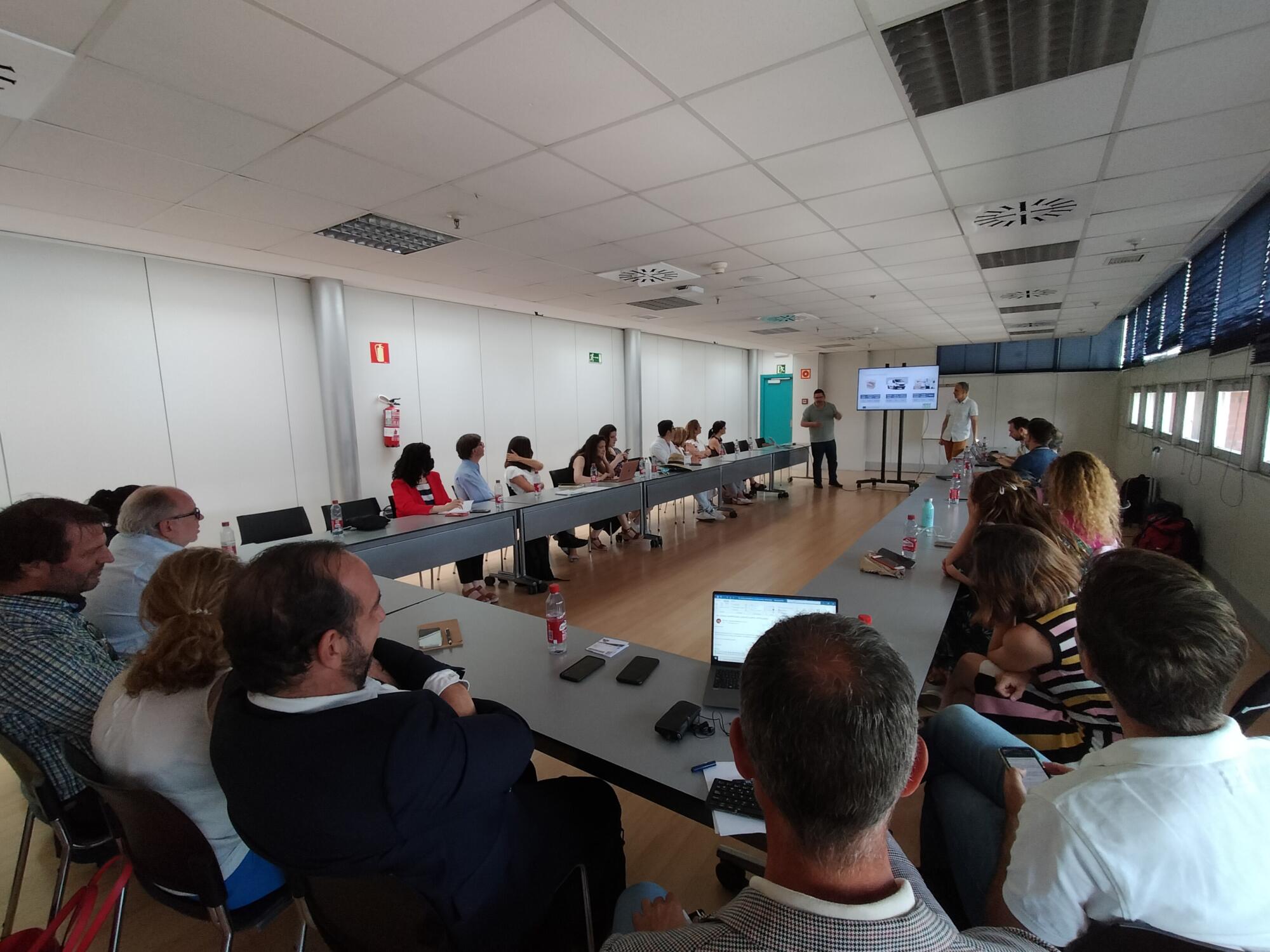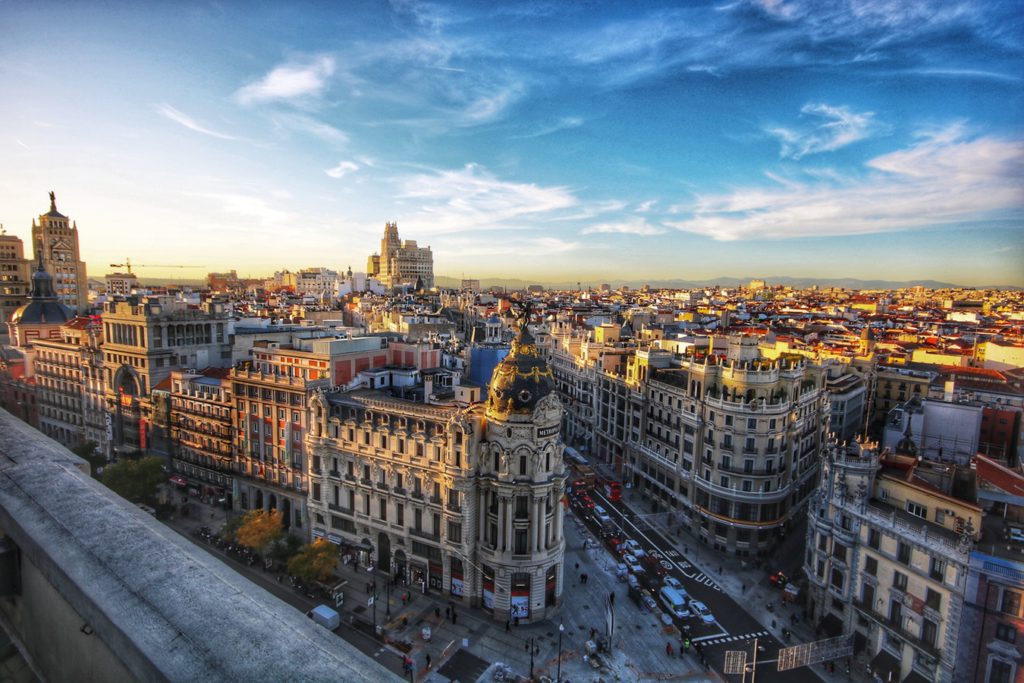Madrid’s new micro hub reduces the distance travelled for deliveries by 33%
On 14 June, twenty-five stakeholders of the Madrid LEAD Community of Practice met on the premises of the Global Mobility Call to touch base on the main achievements of the Living Lab and discuss potential exploitation pathways.
Early in the morning, participants meet at Plaza Mayor to visit the micro hub located in the central parking lot. The logistics micro hub located in one of the main arteries of the Spanish capital is one of the many measures included in the city’s 360 Environmental Sustainability Strategy.
EMT Madrid, together with the LEAD partner CITYlogin, has set up a LEAD Living Lab as a pilot initiative for a more sustainable distribution of goods, from home delivery to supermarkets, neighbourhood stores or transport of large goods to end-customer. The distribution of goods is carried out sustainably thanks to a fleet of 100% electric motorcycles, specially adapted for urban distribution.
The meeting started with a presentation of LEAD and the Madrid Living Lab, by leader Sergio Balaguer Fernandez from EMT Madrid. This was followed by a presentation focusing on the Digital Twin of Madrid, delivered by Angel Batalla (LastMile Team) and Alfonso Molina (CityLogin).
The overall context of the S. Fernando hub, in functioning before LEAD started, was presented, including the type of goods delivered, type of vehicles, and duration of the journey, followed by a comparison with the current situation since the Plaza Mayor micro hub has been in operation. Since then, there was a need for additional staff to manage the operation, which has led to job creation with 12 new job posts filled. Further, the preliminary information shows a 33% reduction in the number of kilometres travelled by the couriers.
Participants were also given some insight into the Madrid Digital Twin, with mentions to the definition of the scenarios, with the calculation of emissions (with different environmental and economic Key Performance Indicators), always establishing the comparison of the scenario of the S. Fernando hub and the new Plaza Mayor micro hub, as the initial step. The next step of the process is to run the simulation aiming for route optimisation considering emission, noise, and route calculation. The Digital Twin is mostly using geographic data, traffic data, vehicle characteristics and available personnel for the current calibration.
The process will lead to the setup of an open data collection, integrated with the EMT Madrid open data portal, widely available for other stakeholders to run their simulations for their local context. The main advantage of the Digital Twin is providing quick and useful answers about context and type of vehicles, with the existing software allowing for reliable route optimisation.
Jose Manuel Vassallo from UPM moderated a discussion with participants focusing on the evaluation of the activities of the micro hub, focusing on economic, environmental, and social criteria, to establish comparisons to the previous scenario and the current micro hub scenario.
A survey was handed out for the members of the Community of Practice to fill in referring to the qualitative indicators and particularly to the impact on job creation and life quality in the neighbourhoods. Participants were then asked how they think we can develop the work conducted in the micro hub and if the model can be exploited elsewhere in the city. Particularly, they were asked to propose new ideas to foster a more sustainable behaviour on users for urban logistics and solutions for better cooperation between the stakeholders involved in last-mile logistics.
Among the many suggestions were the inclusion of information for consumers on consumed CO2 for a given delivery, fostering parcel locker deliveries instead of home delivery, and incentivising local commerce with proximity delivery hubs, etc.


